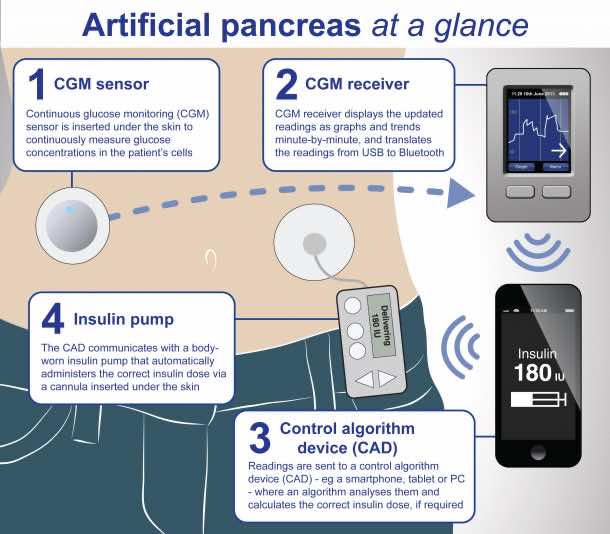People suffering from Type 1 diabetes (insulin dependent type) need to constantly keep their blood glucose level (BGL) in check and take insulin as per the prescription of doctor. However, this everyday struggle of caring for oneself can now be hopefully reduced. A recent study showed that automated “artificial pancreas” will be available as early as 2018.
The review paper by Thabit and Hovorka at Cambridge University analyses the overall trend and progress of various artificial automated systems and their technology, including the artificial pancreas that is currently under development by the scientists at Boston University.
The current treatment for insulin-dependent diabetes involves two phases. First, the patient needs to check their BGL manually by a finger prick blood test; the reading needs to be taken several times during the day. Secondly, they ought to administer the insulin whenever the reading is above normal. The insulin is in a “pump,” a device that can be attached to clothing to administer the normal level insulin doses through a catheter under the skin. Patients have to manually direct the pump to inject extra insulin while having a meal.

Artificial pancreas will combine both these steps in a single “closed-loop” system. A needle in the skin will constantly monitor glucose level in blood and administer the required dose automatically without the need of user doing it manually every time. This accounts for greater accuracy. Additionally, these “pumps” administer a common basal dose of insulin that is not ideal method as insulin requirement vary from time to time and from person to person. The artificial pancreas will be able to monitor these fluctuating needs, thereby giving additional advantage to closed-loop systems.
Clinical trials have been conducted in diabetes camps, and remotely supervised free tests were also carried out at homes to check the implications of artificial pancreas. The studies conclude that artificial pancreas is better at maintaining ideal glucose level, and it also decreases the time of hypoglycemic state (state of low blood sugar).
“In trials to date, users have been positive about how use of an artificial pancreas gives them ‘time off’ or a ‘holiday’ from their diabetes management, since the system is managing their blood sugar effectively without the need for constant monitoring by the user,” says in the paper.
Artificial pancreas has better viability than transplant of insulin secreting cells or entire pancreas. These surgeries are invasive and may result in complications like tissue rejection. Research is underway to overcome the existing and possible challenges with artificial pancreas to further improve the technology.
The FDA is currently reviewing the proposal of an artificial pancreas system that may get approved by next year. Meanwhile, a study by UK National Institute for Health Research foresees that closed-loop systems may be available in market by 2018.

High hopes for these life-saving methods and techniques!


